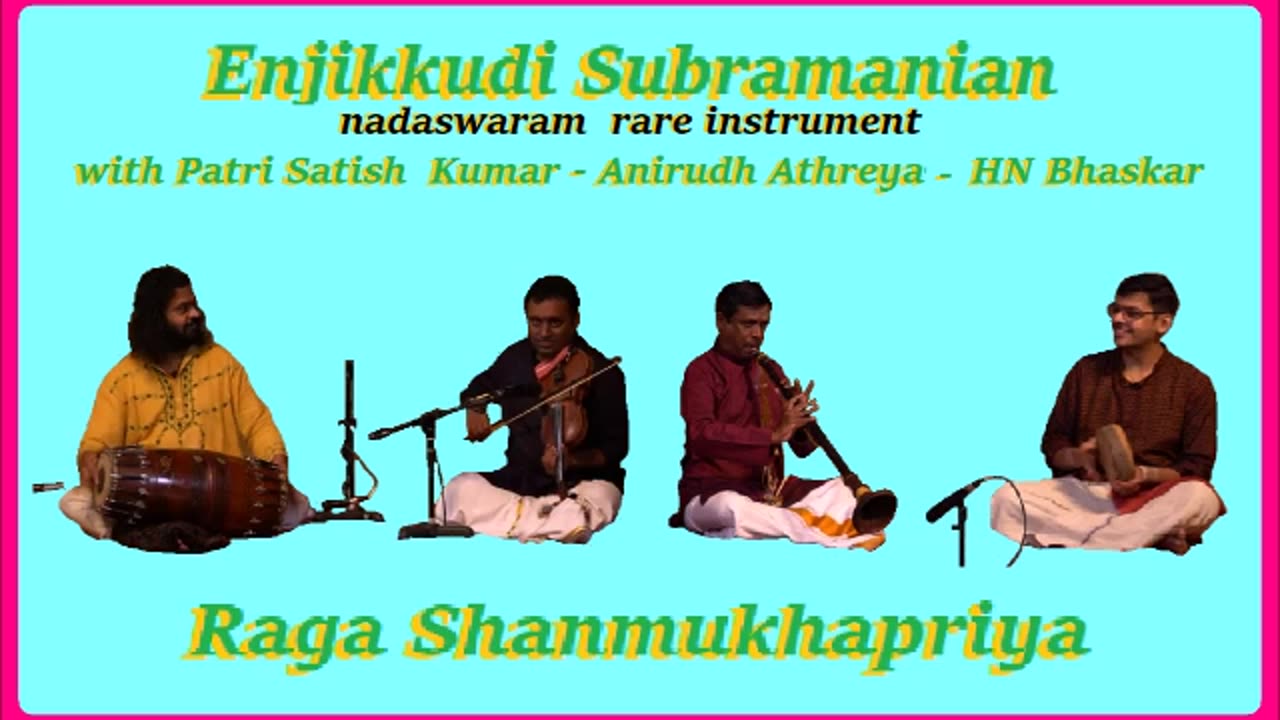Premium Only Content

ENJIKKUDI SUBRAMANIAM---NADASWARAM RARE INSTRUMENT
The Nadaswaram, sometimes known as nagaswaram, nadhaswaram, or nathaswaram, is a prominent South Indian classical musical instrument resembling the western oboe. It's a two-reed trumpet with a conical bore that gradually widens toward the bottom. The top half contains a metal staple through which a tiny metallic cylinder containing the reed mouthpiece is put. A little ivory or horn needle is connected to it, along with extra reeds, and is used to remove the reed of saliva and other debris, allowing free airflow. Its bottom end is a metallic bell.
The Nadaswaram's body is traditionally constructed of aacha tree, although bamboo, sandalwood, copper, bronze, ebony, and ivory are also used nowadays. Ancient wood is preferred for wooden instruments, and wood rescued from demolished old buildings is occasionally used. The Nadaswaram features seven finger holes and five extra holes at the bottom that may be filled with wax to change the tone. The Nadaswaram's many components are thought to have diverse religious significance.
The Nadaswaram is played at practically all Hindu weddings and temples in the South Indian tradition and is regarded as particularly auspicious. It belongs to the Mangala vadyam family of instruments This instrument is usually played together with a pair of thavil drums accompanying it, or along with a drone from a similar oboe known as the ottu.
Many ancient Tamil scriptures mention Nadaswaram.
The Nadaswaram has a two-and-a-half-octave range, comparable to the Indian bansuri flute, which has the same fingering. Unlike the flute, which produces half and quarter tones by partially opening and shutting finger holes, the Nadaswaram produces them by altering the pressure and intensity of the airflow through the pipe. Due to its high volume and strength, it is primarily an outdoor instrument, suitable to open settings rather than interior concerts.
-
 59:36
59:36
RAGASANGIT
3 days agoAMJAD ALI KHAN SAROD
71 -
 1:03:19
1:03:19
Timcast
3 hours agoMan DRIVES CAR Into Tesla Protesters, ARRESTED & Charged, DOJ THREATENS Arrestsc VIOLENCE Escalates
300K320 -
 43:33
43:33
CryptoWendyO
2 hours ago $1.58 earnedPREPARE FOR XRP’S NEXT BIG MOVE (3 HUGE ANNOUNCEMENTS)
27.3K1 -
 1:53:30
1:53:30
Steven Crowder
6 hours agoHow Rogue Judges Are Destroying MAGA & How Trump Can Stop Them
619K397 -
 1:30:41
1:30:41
Benny Johnson
4 hours ago🚨PANIC: DOJ Moves To LOCK-UP The Squad! Terrorism Charges For Libs | Snow White BOMBS, Trump Curse
131K178 -
 1:08:49
1:08:49
Flyover Conservatives
14 hours agoSchumer, Newsom, AOC & Bernie: Is this the Collapse of the Democrat Party?; Economic Update - Dr. Kirk Elliott | FOC Show
61.8K3 -
 2:53:41
2:53:41
The Dana Show with Dana Loesch
3 hours agoTAMPON TIM WALKS BACK TESLA COMMENTS | The Dana Show LIVE on Rumble!
52.3K4 -
 59:48
59:48
VINCE
7 hours agoThe Democrat Party Is Falling Apart | Episode 6 - 03/24/25
456K546 -
 1:05:22
1:05:22
Grant Stinchfield
20 hours ago $4.32 earnedMoon Landing: Giant Leap or Grand Hoax?
50.3K23 -
 33:43
33:43
Rethinking the Dollar
4 hours agoThis Fake White House Bitcoin Video Is Going Viral—Why? | Morning Check-In
39.5K6